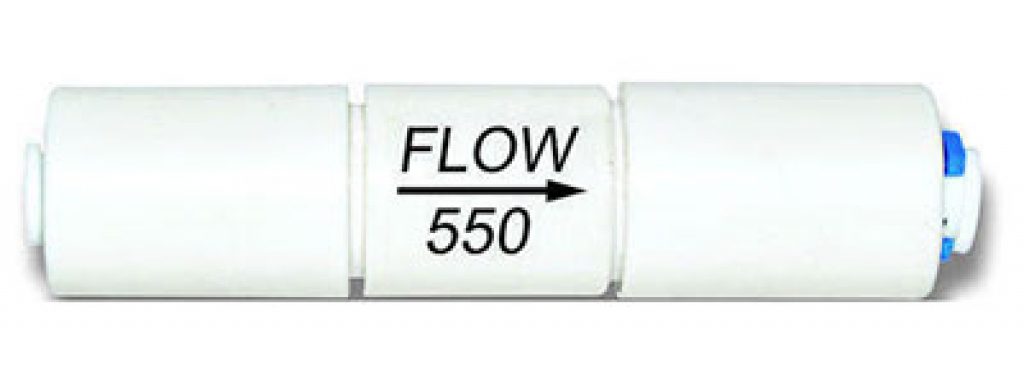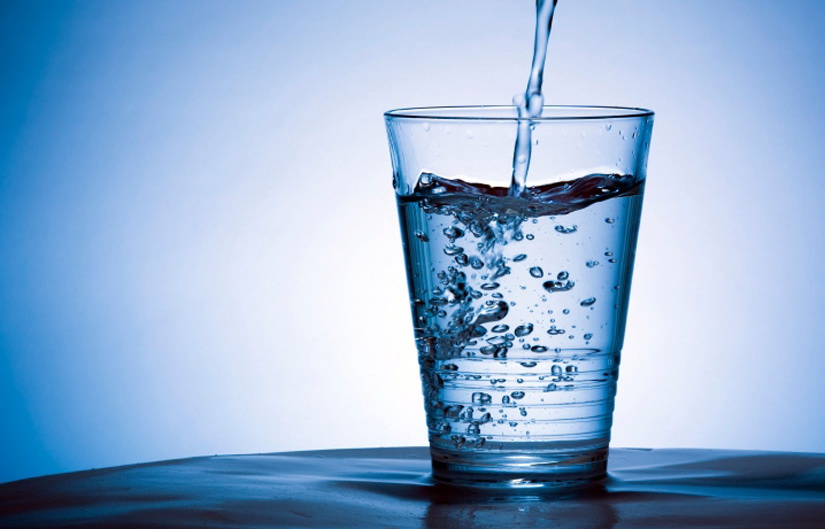
A lot of people find RO water purifiers as one of the best water purifiers in the present market. It is because these water filtration systems provide users with a high degree of water purification as compared to other types of filtration techniques.

One of the key reasons being that a UV light helps to destroy viruses and bacteria easily. Reverse Osmosis is a very beneficial water purification methodology that is based on the usage of a semipermeable membrane. It helps in the removal of molecules, ions, and other large sized particles from water.
What is Flow Restrictor?
A flow restrictor is a device that restricts the rejected water from the RO device. It helps in maintaining a high level of pressure in the RO membrane by creating a sort of back pressure on it. This helps in controlling the purifier’s recovery ratio.
Flow restrictors are basically designed to be used in residential RO (reverse osmosis) systems. It helps in restricting the flow of water on the drain line and keeps the membrane in the pressurized state. To get the desired result from your flow restrictor, it has to be of a proper size as per the flow of an RO membrane system.
In the absence of a flow restrictor, the high-pressure water will start to come inside from the booster pump. It will begin to move in an unrestricted manner from the drain outlet of the reverse osmosis membrane. The result will be the development of low pressure in the membrane and a lot of water wastage. Under this situation, an RO membrane would not be able to work if the pressure in the membrane isn’t that high.
What is the right time to replace an RO membrane?
Flow restrictors are also called as capillaries or flow controls that are appropriate for all types of RO systems. Its size should meet the capacity of an RO membrane. Flow restrictors help in the creation of pressure in the RO membrane element. It also helps in maintaining the desired level of reject flow and permeate flow.

Health experts advise to replace it whenever you replace RO membrane of your water purifier. This will ensure its best working performing and keeps your system running at its peak efficiency.
The number on flow controls you have indicates the rate of flow in milliliters/minute. The restrictors you install in your water purification unit should properly match the rate of production of the membrane. You can easily find flow restrictors in different types of flow ratings.
How to Find the right flow restrictor for your system?
The ratings mentioned on the flow restrictors indicates flow rate in mL/ minute. The membrane capacity of RO membrane is GPD or Gallons Per Day. Here one gallon is equivalent to around 3.78 liters. Ideally, the value of flow restrictor has to be four times the capacity of the RO membrane.
To find the best matching flow restrictor, you need to change the capacity value of a flow restrictor into GPD. This is done by multiplying the capacity of flow restrictor by 0.38. This will get it converted into GPD.
So, for FR 800, the flow rate is 800. To convert it into GPD, you need to multiply it by 0.38. This will give you a membrane capacity of 304 GPD. As told earlier, the flow rate should be four times the membrane capacity, so we will divide it by 4. It gives us 76 GPD. This implies that for a reverse osmosis membrane of 76GPD, a flow restrictor of 800 mL is ideal.
Below is the chart that provides the recommended size of flow restrictor for specific RO membrane capacity.
| MEMBRANE SIZE (IN GPD) | FLOW RESTRICTOR (ML PER MINUTE) |
|---|---|
| 18 | 200 |
| 25 | 250 |
| 36 | 250 or 360 |
| 50 | 420 or 525 |
| 75 | 550 to 800 |
| 80 | 800 |
| 100 | 800 |
How can the improper selection of the flow restrictorsize impact the working of your RO purifier?
On using an incorrect size of a flow restrictor, it can cause an imbalance between the purification quality and water wastage. If both these things are not matched, then it can lead to an excessive water wastage or can also lower the lifespan of your RO membrane.
Choosing a flow resistor of less size will cause early choking of your RO membrane. It can even lead to reduce the lifespan of the membrane and increase the TDS value of filtered water.
If you use a high capacity flow control, then also it will not be good for your system. Such flow control will cause excessive water wastage and the development of low pressure in the membrane. Such low pressure will adversely impact the overall filtration quality that you obtain from your water purifier system.
What would be the right time to replace your flow Restrictor?
The best time to replace your flow restrictor is when you change your RO membrane. This is important because with passing time, just like filters and RO membrane, the scale can build upon flow restrictor too. This can cause blockage in them and hinder their operation.
Also, if your new RO membrane has got a different capacity than the earlier one, then you need to buy a new flow control that matches the capacity of your new RO membrane.
Hope this article has equipped you with the much-needed information about flow restrictors and the right time to get them replaced in your RO water purifier.


